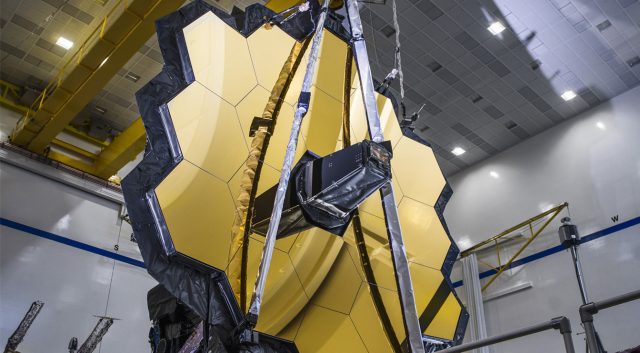
We know the James Webb Space Telescope works because NASA told us it did, but now you don’t have to take the agency’s word for it. NASA has released the telescope’s first images, although they’re still just from the calibration process. It’ll be a few months before Webb is ready to begin science operations, but there’s a really interesting selfie to tide you over. No, Webb still doesn’t have any external cameras, but it does have a special lens inside that lets us peek at the primary mirror.
The James Webb Space Telescope launched on Christmas Day last year, heading into space aboard an ESA Ariane 5 rocket. The launch was textbook, ensuring Webb had even more fuel than NASA had banked on. NASA now believes Webb could continue operating for 20 years, a significant increase from its five-year design. Webb unfolded in the weeks after launch, and it reached its home at the Earth-Sun L2 Lagrange Point in late January. Now, NASA is calibrating the mirror, delivering these first images.

The image immediately above is a “real” version of the simulation NASA released last week. It shows 18 points of light that are actually a single star known as HD 84406. There are 18 of them because that’s how many segments are in the spacecraft’s Korsch-style reflector. NASA first had to identify which point was which — you can see them all labeled above. They even know which points come from the winged sections of the mirror.
Because this was the telescope’s first observation, the team wasn’t even sure where exactly to point it. They scanned 156 different positions around HD 84406 and captured 1,560 images for a total of 56GB of data. However, Webb was able to locate the star in all of its mirrors within the first 16 exposures. Now, the team is making plans to adjust the panels to focus on a single point so that one star will look like one star to Webb.
The image below is possibly even more incredible than the 18 points of light. When Webb launched, there was much ado about no one ever seeing it again because there are no external cameras — it just drifted away from the Ariane 5 into the abyss. Well, except for the glorious 6.5-meter mirror, as it turns out. The telescope’s NIRCam instrument was designed with a special “pupil imaging lens” inside that, in concert with the secondary mirror, can reflect an image of the primary mirror for NIRCam to capture a mirror selfie.

The selfie lens is not intended for science operations — it’s just an engineering tool to help with alignment, turning those 18 dots into one. In the selfie, you can make out the divisions of all 18 platters and the shadow of the secondary mirror supports. One of the segments is also much brighter than the others. NASA says that’s because it was reflecting a bright star while the others were pointed at darker parts of the void.
We expect the first properly focused images of space from Webb to arrive over the summer.
Now Read:

Source link


